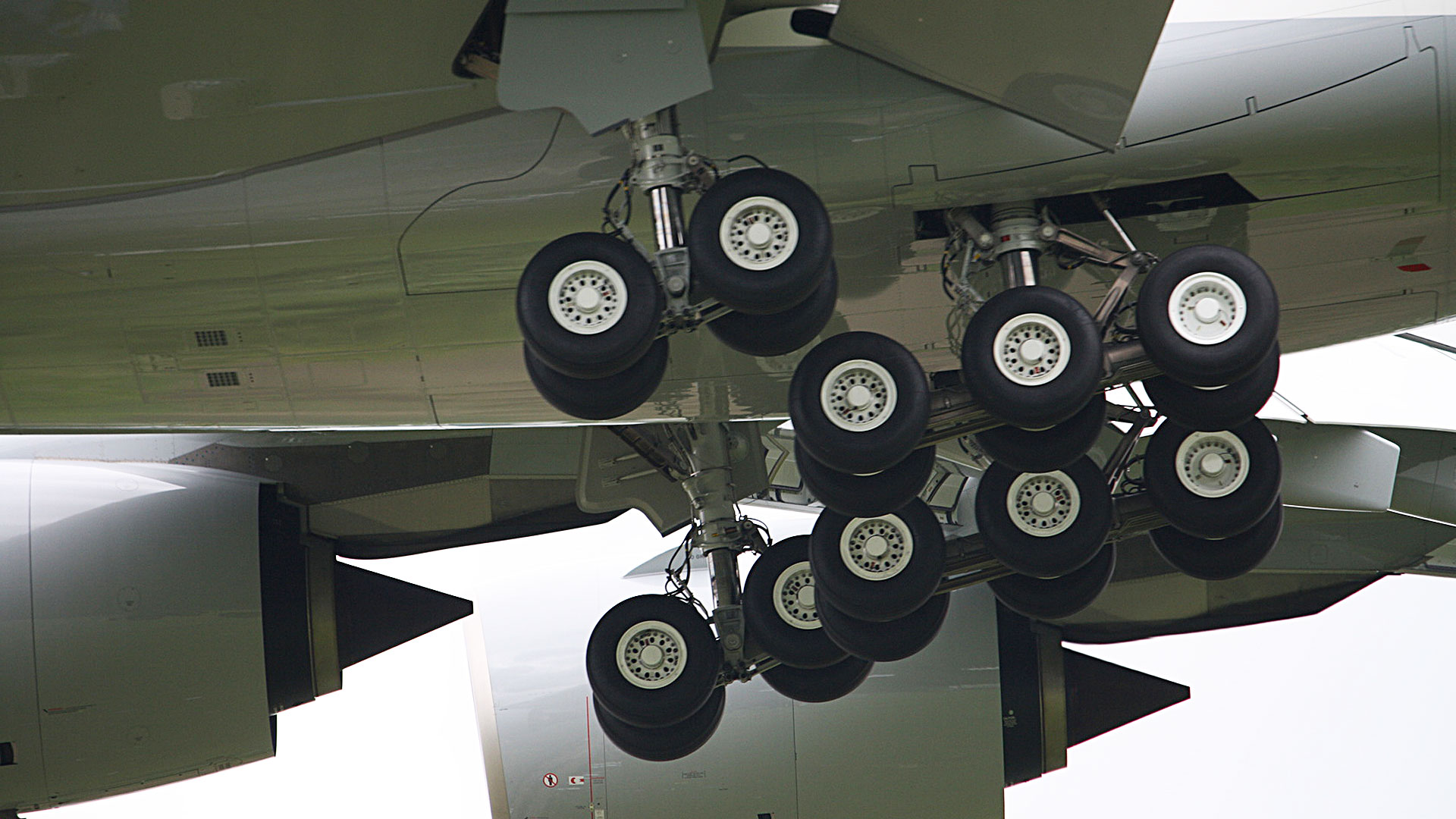Patented procedure and device for the cleaning of runways
The task
At all airports, during normal flight operations, there is intense rubber abrasion happening during touchdown, especially of the main landing gear, regardless of type and size of the aircraft. The heavier the landing plane and the more frequently planes are landing, the faster there is a rubber coat building on the runway, which has to be removed at regular intervals.
The reason for this procedure is flight safety. A rubber coated runway immensely extends the breaking time especially when wet (standing water), snowy or slushy conditions exist. If there is a continuous rubber layer on top of the runway, grooves prevent the water from draining. In this scenario the airplane’s tires do almost not make contact with the runway’s concrete anymore, which might very well lead to „hydroplaning“, during which water between tires and runway make the plane’s proper steering impossible. A particular danger is the so called „viscose hydroplaning“, which happens when the runway is especially contaminated, and is carrying a thin layer of water so that the plane’s steering is thoroughly made impossible. This is a common factor in accidents during touchdown and „runway overshoots“.
The most severe rubber contamination emerges in the so called “touchdown zones”, the first 900 m of the runway on both ends. Thus this area must be cleaned regularly and thoroughly, even up to every 14 days on larger commercial airports.

The current state of technology
Nowadays the common cleaning procedure for runways is high-pressure water blasting. Rotating high-pressure jets are getting rid of rubber abrasion. Excess water and flakes of rubber particles are being sucked up into a vehicle and have to be disposed of. The water jet is also not only making contact with the contaminations, but is also shooting onto the surface of the runway so that possible damage can occur.
This overall approach is:- Costly
- Tied to weather conditions
- Abrasive to the runway coating
- Takes up a lot of time
- Causes expenses for the disposal of rubber waste
Cleaning by the laser blasting procedure
Cleaning runways with a laser system offers a multitude of benefits. The application of the laser blasting procedure is as follows: A laser beam hits the runway coating of the touchdown zone. The frequency of the laser is making sure that the laser beam is only affecting the rubber coating that is to be removed, such that it combusts. The occurring waste gases are immediately sucked up by a vacuuming system and neutralized by a catalyst. The difference in thickness of the coating are being measured before and after the cleaning process by an ultrasound system and the results are being protocoled. Archiving this data proves the continuously clean condition of the runway and makes it transparent for quality control.
The operating cost of a laser system is significantly lower then with the common water cleaning procedure. The handling is very comfortable in comparison. Both factors enable a higher usage frequency. A weekly or even daily operation of the laser system is possible and actually desirable for keeping the runway clean on a high level. This contributes to the security of the landing process and therefore the security of the overall air traffic. The cleaning laser can comfortably be used in any weather due to its ability to traverse water, ice or snow that might lie on the runway. It can also be operated at temperatures below freezing. The laser system is installed in a special vehicle equipped with the following technical components:
- A laser system for the removal of rubber abrasion
- An ultrasonic system for the measurement of layer thickness before and after the procedure
- A vacuuming system for sucking up residue and for filtering of waste gases
- A computer system for archiving the cleaning data
